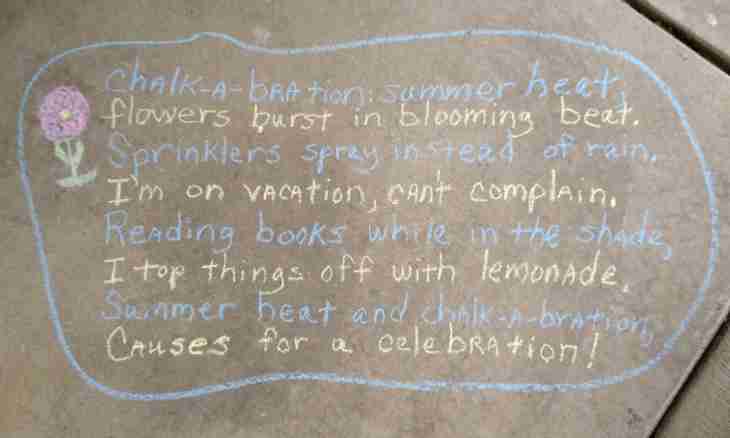Formally it is considered that the formula of chalk corresponds to a chemical formula of a carbonate of calcium — CaCO3. However this rock has rather complex structure and includes various impurity. A calcium carbonate it can contain about 91-98.5%.
The origin chalk has organic. Deposits of this breed represent remains of skeletons and sinks of small mollusks of the warm seas of the Cretaceous. Besides a calcium carbonate, in small quantities the magnesium carbonate and also about 3% of oxides of different metals is a part of chalk.
Whether chalk has a smell
Soft fine-grained rather fragile substance of white color represents chalk. Any of the main components of a smell which are a part of this breed has no. Respectively, and chalk in a dry form smells of nothing. If it is simple to sweep, for example, the scattered chalk in the room, no smell can be felt.
In water this material is dissolved badly, but it is pretty often used nevertheless for production of pobelochny solutions. When drawing on walls cretaceous solution, as well as limy, can exude weak, rather pleasant smell of freshness.
However and in this case not actually chalk smells. Perhaps, emergence of a smell of freshness when whitewashing is connected with formation of a hydrocarbonate of Ca(HCO3) 2 calcium as a result of reaction of CaCO3 with the carbonic acid exhaled by the person.
- SaSO3+ H2O + CO2=Sa (HCO3)2.
In chemistry it is considered, for example, that this salt is capable to impact to water relish of freshness.
What has properties
Geologists refer chalk to group of rigid semi-rocky breeds. Chalk durability in many respects depends on degree of its humidity. Its indicators at this breed begin to decrease already at humidity of 1-2%.
At humidity in 20-30% durability of chalk, on the contrary, sharply increases by compression by 2-3 times. At the same time the breed begins to show plastic properties. The main difficulties in its production are connected with ability of chalk to become viscous in the damp environment.
Being damp, this breed begins to stick to buckets of excavators, bodies of dump trucks, tape conveyors. Because of this enterprise of the mining industry often refuse to conduct developments of chalk deeply in damp layers, without looking even that here it is rather qualitative.
Besides not too high durability and ability to become knitting, to characteristics of this breed it is possible to refer also instability to low temperature impact. After several cycles of freezing and a defrosting chalk is scattered on pieces no more than 3 mm in size.

